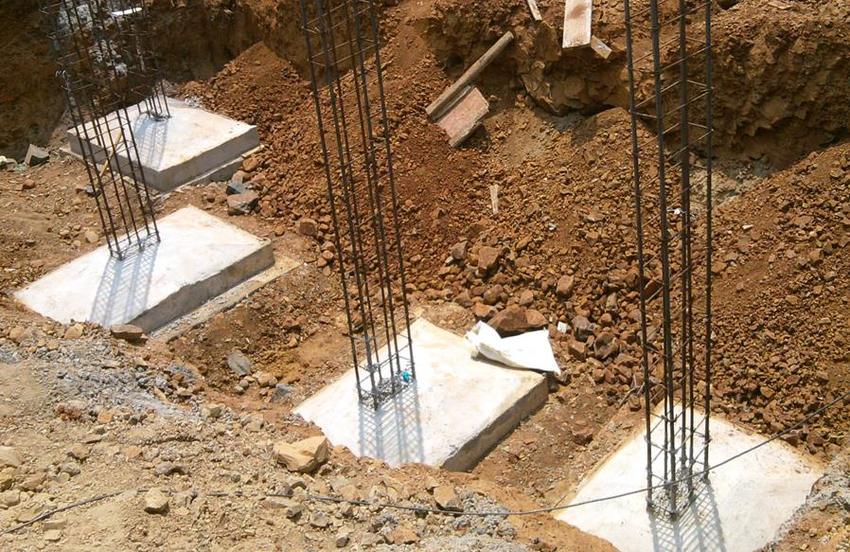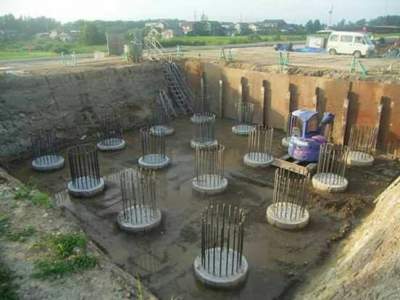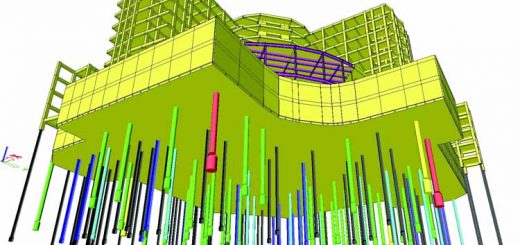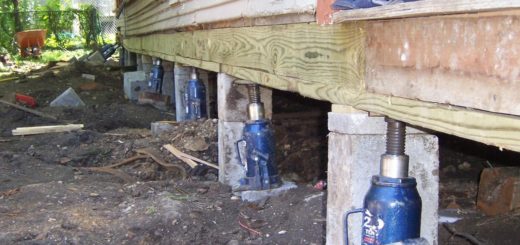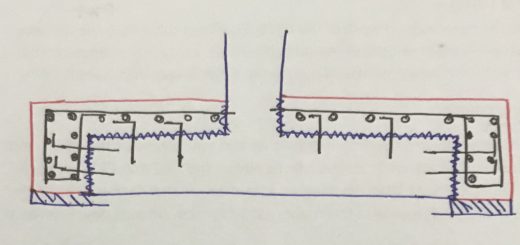Concrete Foundation What is it
The concrete foundation is the most frequently used type of foundation in the world. Even though there are other types of foundations, concrete foundations can carry the very load when compared to the other types.
There are some factors to be considered in selecting the suitable type of foundation.
- Strength of foundation
- Durability of the foundation
- Ease of construction
- Economy
The foundation types such as rubble, timber, steel, etc. can not carry the load when compared to the constructions done using concrete.
Type of concrete Foundation
- Shallow Foundations
Shallow foundations are constructed at shallower depths. Generally, excavations are not done up to deeper depths like deep foundations.
Pad footings, combined footings, mat foundations, slab on grade foundation, strip footings, etc. are considered under this category.
- Deep Foundation
Cast-in-situ bored piles, driven piles, diaphragm walls, etc are the main foundation types constructed as deep foundations. Construction of this foundation is challenging when compared to the shallow foundations.
In addition, high skills and technology are required with careful monitoring for this type of concrete foundation. Further, the cost of the construction is also generally higher than the shallow foundations.
Design of Concrete Foundation
The design of the concrete foundations is not the same. The methods used for the deep and shallow foundations are completely different.
- Design of Shallow Foundations
Shallow foundations are designed based on the allowable bearing capacity of the soil. The bearing capacity is obtained based on the ground condition are used for the design. Footings are designed for bending and shear after selecting the dimensions in such a way that it does not increase the allowable bearing capacity.
Settlement of the foundation is limited by the allowable bearing capacity. In addition, where necessary, the settlement of the foundation is checked.
Where required, ground improvement is done when it is suggested by the soil investigation before laying the concrete foundation.
- Deep Foundation Design
The deep foundation or pile foundation is designed for structural capacity and geotechnical capacity. The minimum of these two is taken as the pile capacity.
The geotechnical capacity of the pile is obtained from the skin friction and end bearing. In addition, when there are compressible soils, the effect of the negative skin friction shall also be considered.
Settlement of the Foundations
The concrete foundation could be subject to excessive settlement when they are not designed and constructed properly. The settlement could be observed in the driven piles and shallow foundations.
The article settlement of shallow foundation could be read for more information. There are different types of settlements in addition to elastic settlements. The article on consolidation settlement could be read for getting awareness on these types of settlements. The types of settlements depend on the soil types.
Before the construction or after the construction when occurring the settlement, soil stabilization is done to improve the bearing capacity of the soil and to minimize the settlement.
Construction of Concrete Foundation
Construction of pile foundations is challenging when compared to shallow foundations. Quality control and quality assurance of the shall foundation can be done easily compared to the deep foundations.
However, there are best practices that the construction of any type of foundation can be done correctly. The article pile foundation construction problems and solutions could be read for more information.
The article further discusses the pile foundation design, construction, and testing guide further discusses the quality assurance process of the concrete foundation called the piles.
The key steps of the construction of a shallow foundation are as follows.
- If required, do the ground improvement.
- Level the soil and compare or excavate up to the required depth.
- Place the screed
- Lay the waterproofing and projective screed (when applicable – especially raft foundations)
- Place the reinforcements and check whether they are correctly placed and tied.
- Do the concrete pouring as per the approved concrete mix design.
- Testing the concrete as per the specification or relevant standard.

